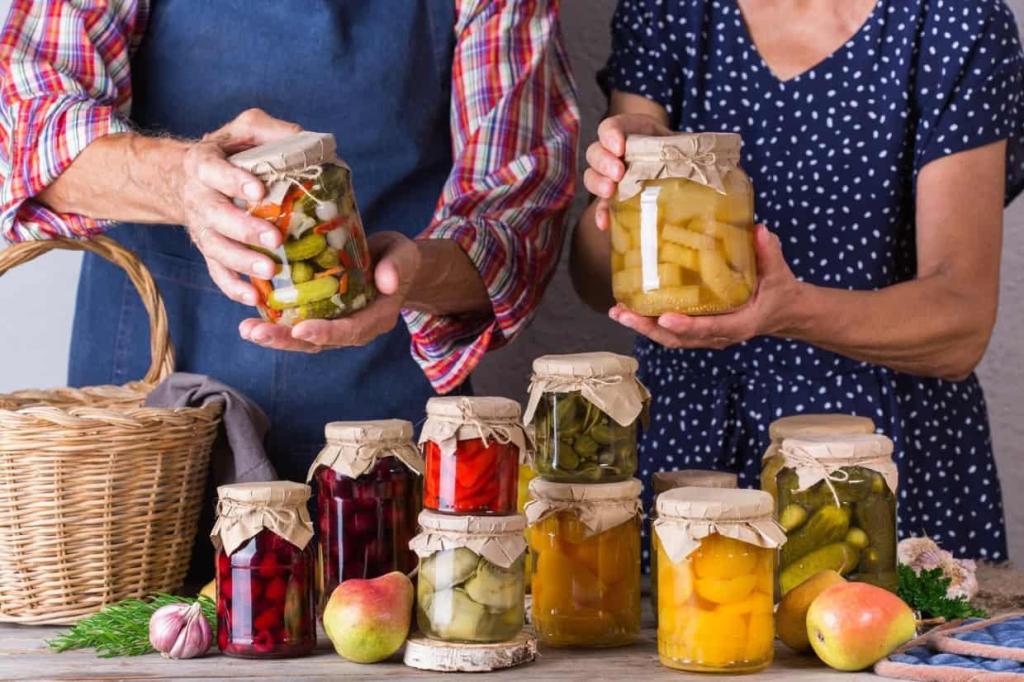By Sarita Harbour
There’s been a recent noticeable resurgence in home canning, a method of preserving food that was once a staple in American households. This renewed interest is particularly strong among individuals who’ve never tried canning but like gaining self-sufficiency skills and control over their food supply. From young urbanites to rural families, people across the United States are turning to this traditional practice to preserve and connect meaningfully with their food.
The new wave of canners
A quick look at social media such as Pinterest, Facebook and Instagram shows that today’s canners come from diverse backgrounds. Canning enthusiasts include millennials, families with young children and sustainability enthusiasts.
According to the U.S. Centers for Disease Control and Prevention, concerns about food security rose during the early stages of the COVID-19 pandemic. During this time, more people began to cook at home and sought ways to preserve their food.
This trend has continued even as the pandemic has waned, driven by a growing interest in self-sufficiency, reducing food waste and a desire for healthier, additive-free food. Currently, a search for #canning on Tiktok returns 69.5 million posts.
Today’s canning enthusiasts explore canning to preserve the bounty from their home gardens or local farmers’ markets. They’re interested in canning fruits, vegetables, homemade jams and even meats, which allows them to enjoy seasonal produce year-round while minimizing their reliance on store-bought goods.
“I preserve for the sheer joy of it,” says Laura Sampson, a long-time canner and owner of the website Little Frugal Homestead. “We don’t rely on it as a main food source, but rather, they’re specialty items I can share with friends and family.”
Why preserving food proves popular
Several factors contribute to the resurgence of food canning. Firstly, economic concerns prompt people to look for ways to save money, including preserving inexpensive seasonal or homegrown produce instead of buying expensive, pre-packaged alternatives.
“I come from a family that canned a lot of moose and salmon as a kid and relied on those canned goods as a main source of protein for our small family of four in rural Alaska in the ’70s,” says Sampson. “My mother canned and preserved as a way to stretch out food budget as far as possible.”
Canning and preserving allow individuals to save money by buying in bulk. They may cut down on costs by buying seasonal produce or canning homegrown fruits and vegetables, ultimately reducing grocery bills.
Other home canners do so because of health concerns and worries that processed foods may contain high preservatives, sugar and sodium. Canning and preserving offer a way to control the ingredients in foods. The opportunity to create preservative-free, organic meals at home particularly appeals to health-conscious consumers.
In addition, the uncertainty surrounding the global food supply has also spurred interest in home canning. Concerns about food shortages and the quality of commercially available products have led some to turn to this age-old practice to ensure food security for their families.
Canning today vs. 100 years ago
While the basic principles of canning remain the same, acceptable methods and equipment have changed significantly over the past century. A hundred years ago, canning was a labor-intensive process, often done in large batches to prepare for long winters.
Today, technological advancements make canning more accessible and safer for beginners. For example, modern pressure and water bath canners are designed with built-in safety features, reducing the risk of foodborne illnesses.
Following updated recipes and guidelines from reputable sources, such as the National Center for Home Food Preservation, ensures that today’s canners can access the most current, science-based methods for safe food preservation. This shift makes canning more user friendly and reduces the likelihood of spoilage and waste.
The appeal of canning
For many of today’s canners, the appeal of canning goes beyond practicality; it’s also about the satisfaction of making something from scratch. Canning allows people interested in the DIY, handmade, homegrown and homesteading lifestyle to engage in a hands-on activity that connects them with the seasons and traditions.
“I think there is a strong return-to-our-roots trend in Gen Z kids, and I see it in my own Gen Z kids,” Sampson says. “I’m thankful we spent much of their youth growing, drying, canning, preserving and foraging. It has served them well as they set out on their own and explore the natural food world around them.”
Whether canning in a tiny kitchen in a highrise condo or a spacious suburban kitchen, there’s a certain pride in stocking a pantry with jars of homemade jam, pickles or tomato sauce. Additionally, canning as a family activity can create a legacy. Many families pass down canning recipes and techniques through generations.
This helps to preserve food, and also memories and traditions. This sense of continuity and connection to the past is another reason why canning is experiencing a revival.
Canning then and now
The resurgence of home canning reflects a broader interest in younger generations toward self-sufficiency, sustainability and a desire to reconnect with traditional practices. Whether driven by economic concerns, health consciousness or a simple love of homemade food, today’s canners are part of a growing movement that values the old ways of doing things.
As more people discover the joys of canning, this trend will likely continue to grow. Today’s canners preserve food and a way of life that many thought had been lost.
Sarita Harbour is a long-time business and personal finance writer. She created An Off Grid Life to help readers everywhere become more prepared and self reliant.
Originally Published:
